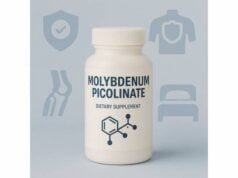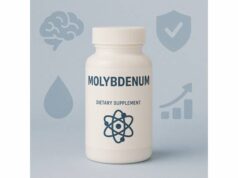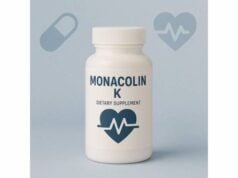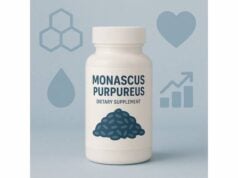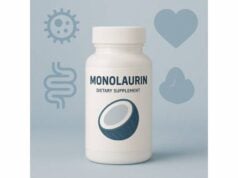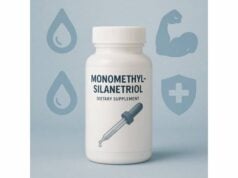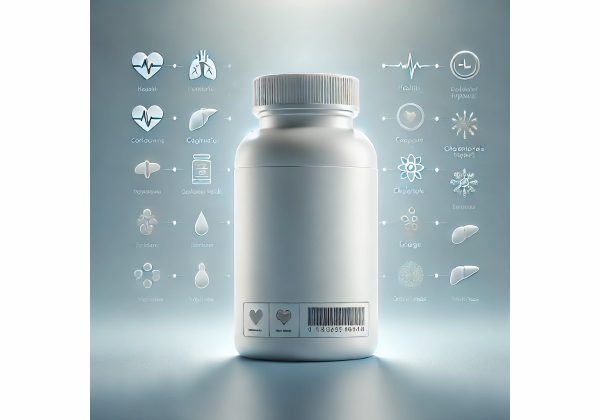
Myrosinase is the plant enzyme that unlocks many of the health benefits people associate with cruciferous vegetables like broccoli, Brussels sprouts, kale, arugula, mustard, and radish. When these vegetables are chopped, chewed, or lightly cooked, myrosinase hydrolyzes glucosinolates—most famously glucoraphanin—into biologically active isothiocyanates such as sulforaphane. Those metabolites are the real actors studied for supporting cellular defenses, detoxification pathways, and metabolic health. Because heat and processing can inactivate myrosinase, the way you prepare crucifers strongly affects how much of these compounds your body actually gets. Food pairing matters too: adding an outside source of myrosinase (for example, mustard seed powder or raw radish) can rescue activity in cooked dishes. This guide explains how myrosinase works, why it matters, how to optimize your kitchen routine, what to look for in supplements that include myrosinase or its substrates, sensible intake ranges, and safety considerations. You will also find practical, step-by-step methods that fit real life—so you can turn everyday vegetables into reliable delivery systems for their most valuable metabolites.
Quick Overview
- Myrosinase converts glucosinolates into isothiocyanates (e.g., sulforaphane) that drive many cruciferous health effects.
- Light cooking or adding a raw myrosinase source preserves or restores conversion; prolonged high heat reduces it.
- Typical practical intake targets: foods or supplements yielding about 30–100 μmol sulforaphane per day (≈5–17 mg).
- Mild gastrointestinal discomfort is the most common side effect; start low and assess tolerance.
- Avoid high-dose products if pregnant, breastfeeding, on cancer therapy without clinician approval, or with poorly controlled thyroid disease.
Table of Contents
- What is myrosinase and how it works
- What benefits can you expect
- How to get enough from food
- Supplement forms and dosing guide
- Safety, side effects, and who should avoid
- What the evidence says so far
What is myrosinase and how it works
Myrosinase is a specialized plant enzyme (thioglucoside glucohydrolase; EC 3.2.1.147) present in cruciferous vegetables. Inside the plant, it is stored separately from its natural substrates, glucosinolates. That separation is intentional: it prevents premature reactions while the plant is intact. Once you chop, grate, chew, or otherwise break plant tissues, myrosinase and glucosinolates meet in the presence of water and quickly react. The result is a family of bioactive compounds such as isothiocyanates (ITCs), nitriles, and others. Among the ITCs, sulforaphane—formed mainly from the glucosinolate glucoraphanin—is the most studied. It’s the compound behind the characteristic sharpness of raw crucifers and much of their biological activity.
A few practical details make this enzyme unusually relevant to everyday cooking:
- Temperature sensitivity. Plant myrosinase is heat-labile. High-heat methods (boiling for long periods, prolonged microwaving) can denature the enzyme and sharply reduce conversion to ITCs. Gentle heat and brief cooking are friendlier.
- pH and water. The reaction proceeds in water and is influenced by pH; typical culinary conditions are adequate, which is why simple chopping and resting time before cooking can increase yields.
- Companion proteins. Epithiospecifier protein (ESP) can tilt the reaction away from sulforaphane toward alternative products. Moderate, controlled heat may inactivate ESP while preserving some myrosinase, improving sulforaphane yield.
- Microbial backup. If plant myrosinase is inactivated by cooking, human gut microbes can provide “myrosinase-like” activity. However, inter-individual variability is large, and the yield is typically lower and less predictable than with active plant myrosinase.
- Cross-vegetable synergy. Mustard seed, daikon radish, wasabi, arugula, watercress, and broccoli sprouts are rich in active myrosinase. Adding a small amount of one raw, myrosinase-rich item to cooked crucifers can restore conversion.
Mechanistically, myrosinase hydrolyzes the thioglucoside bond of glucosinolates, freeing the unstable aglycone that rearranges into an isothiocyanate (or alternative products, depending on conditions). Those ITCs then engage cellular defense pathways, most notably by activating Nrf2, a transcription factor that upregulates genes for antioxidant and detoxification enzymes (e.g., NQO1, HO-1, glutathione synthesis enzymes). This is why “getting the conversion right” in the kitchen matters: the enzyme is the gatekeeper between eating glucosinolates and actually absorbing bioactive isothiocyanates.
In short, myrosinase is the on-switch for cruciferous benefits. Preserve it when you can; if you can’t, pair your cooked vegetables with a raw myrosinase source to restore that crucial step.
What benefits can you expect
The enzyme itself is not a supplement you take to directly “fix” a condition; rather, myrosinase enables the formation of compounds—chiefly sulforaphane—that have been investigated for a broad set of outcomes. Here is what that landscape looks like, translated into practical expectations.
Cellular defense and detoxification support. Sulforaphane induces a coordinated response via Nrf2, a master switch for antioxidant and Phase II detoxification pathways. In simple terms, that means your cells ramp up their own protective machinery: more efficient handling of reactive oxygen species, improved quinone detoxification, and enhanced glutathione-related defenses. In human studies with broccoli sprouts or sulforaphane-yielding preparations, this has been linked to measurable changes in biomarkers of oxidative stress and xenobiotic metabolism.
Metabolic and cardiometabolic signals. Trials using broccoli sprouts or standardized sulforaphane doses have reported shifts in inflammation markers (e.g., IL-6, CRP) and sometimes improvements in lipid parameters in specific contexts. These are typically modest and context-dependent, but they are consistent with Nrf2-mediated changes in redox balance and inflammation control.
Gastrointestinal context. In people with Helicobacter pylori colonization, sulforaphane-yielding broccoli sprouts have shown transient reductions in infection markers during intake periods. That does not make sprouts or myrosinase a stand-alone eradication therapy, but it is a notable example of how ITCs produced by myrosinase can influence host–microbe dynamics in the stomach.
Air pollution and environmental exposures. Controlled feeding studies with sulforaphane-rich beverages derived from broccoli sprouts have increased urinary excretion of specific airborne pollutant metabolites, consistent with upregulated detoxification pathways. Again, no single food or enzyme can “detox” the body; rather, regular intake nudges endogenous systems to work more efficiently.
Neuroprotective and dermatologic research. Early-stage human and mechanistic studies link sulforaphane to modulation of pathways involved in neuroinflammation and photoprotection. These findings are promising but preliminary; they justify dietary patterns rich in crucifers more than they justify high-dose self-experimentation.
What’s the common thread? Myrosinase increases the chance that the crucifers you eat are converted into meaningful amounts of isothiocyanates. In real-world terms, that translates into a higher probability of seeing the small but cumulative benefits that observational data and controlled trials associate with frequent crucifer intake—without claiming a cure or oversized effects. Your results will hinge on your preparation methods, your microbiome’s backup capacity, and how consistently you include these foods.
If you want an evidence-aligned approach: make crucifers a regular part of meals, prepare them to preserve or restore myrosinase, and consider a standardized glucoraphanin-plus-myrosinase product if you cannot reliably use food-based strategies. The goal is steady exposure over time, not spikes.
How to get enough from food
You do not have to memorize enzyme kinetics to cook smarter. A few simple habits will maximize myrosinase-driven conversion in your kitchen.
1) Use gentle heat or short cooking times.
- Lightly steam broccoli, broccolini, or Brussels sprouts until bright green and tender-crisp (typically 2–5 minutes, depending on size).
- Quick stir-fry or sauté also works if the total time is short and moisture is present.
- Avoid prolonged boiling or long microwaving, which denatures plant myrosinase.
2) Chop first, then wait.
Chop or grate crucifers and let them sit on the cutting board before cooking—ideally 30–90 minutes. This gives plant myrosinase time to convert glucosinolates while it’s still active. If you cannot wait, move to step 3.
3) Add a raw myrosinase “booster.”
If your dish is cooked (and the plant enzyme is likely inactivated), add a small amount of a raw, myrosinase-rich food at the table. Good options:
- ½–1 teaspoon mustard seed powder (stir into dressings or sprinkle on cooked veggies).
- A handful of raw arugula, watercress, or chopped radish/daikon on cooked broccoli or cauliflower.
- A spoonful of fresh broccoli sprouts or microgreens as a garnish.
4) Pair with vitamin C-rich sides.
Citrus segments, bell peppers, or a squeeze of lemon in dressings supports the overall redox environment and complements the sharp flavor of isothiocyanates.
5) Use sprouts strategically.
Broccoli sprouts are naturally high in glucoraphanin and contain active myrosinase. Add them raw to bowls, sandwiches, or post-cooking as a topper. If you lightly warm a sprout purée (not boiling), you can spoon it over cooked vegetables as a myrosinase “sauce.”
6) Smart meal templates.
- Five-minute broccoli bowl: Steam broccoli florets 3 minutes. Toss with olive oil, lemon, salt. Top with arugula and a pinch of mustard powder.
- Sheet-pan Brussels with radish: Roast halved Brussels at high heat until browned. Plate, then scatter thinly sliced raw radish and drizzle vinaigrette.
- Sprout pesto: Blend broccoli sprouts, parsley, olive oil, garlic, lemon. Spoon over cooked cauliflower steaks.
7) Frozen vegetables? Adjust technique.
Commercial blanching often inactivates myrosinase in frozen broccoli. Use the “booster” strategy: add mustard powder or raw radish/arugula after cooking, or mix in fresh sprouts.
8) Consistency trumps perfection.
You do not need every serving to be optimized. Aim for several crucifer servings per week, prepared in ways that often preserve or restore enzyme activity. The cumulative exposure is what matters.
How much is “enough” from food?
There is no single daily requirement. A practical target is one crucifer serving on most days (e.g., 1–2 cups raw or ~½–1 cup cooked), prepared with an eye toward preserving or rescuing myrosinase activity. Broccoli sprouts are a concentrated option if you tolerate their flavor; about 30–100 grams of fresh sprouts a few times per week can provide meaningful glucoraphanin with active enzyme.
Bottom line: small preparation tweaks—waiting after chopping, shorter cooking, and adding raw myrosinase sources—turn ordinary meals into reliable sources of isothiocyanates.
Supplement forms and dosing guide
You will find three broad categories in the marketplace:
1) Glucoraphanin-only products (no active myrosinase).
These rely on your gut microbiota to convert glucoraphanin into sulforaphane. Yields vary widely between people and are usually lower than with active myrosinase. Some products include stabilizers or co-factors but, without enzyme activity, conversion is uncertain.
2) Combination products (glucoraphanin plus active myrosinase).
These pair the precursor with plant myrosinase (often from broccoli seed or sprouts; sometimes from mustard). When properly formulated and taken with water, they can generate sulforaphane in the upper gastrointestinal tract more predictably than glucoraphanin alone.
3) Direct sulforaphane or “sulforaphane-yielding” extracts.
A smaller segment offers stabilized sulforaphane or proprietary matrices that release it. Quality and labeling vary; many clinical trials have used beverages or extracts prepared in research settings rather than retail products.
How to read labels.
- If a label lists glucoraphanin, you are looking at the precursor dose (commonly 50–400 mg per serving).
- If it lists myrosinase, the activity may be described in “units” or as a proprietary blend. Standardization is uneven.
- Some labels estimate “sulforaphane yield” (e.g., 10–30 mg). Treat those as upper-bound estimates; actual yield depends on moisture, pH, gastric conditions, and timing.
Practical intake ranges.
Human studies have often targeted ~30–100 μmol sulforaphane per day, which is approximately 5–17 mg (based on sulforaphane’s molecular weight). Fresh broccoli sprouts used in research typically delivered variable amounts but could reach similar daily totals when consumed consistently.
Everyday guidance you can use:
- If using a combination product (glucoraphanin + myrosinase), a common regimen is 1–2 capsules daily providing a combined yield in the 5–20 mg sulforaphane range (or equivalent). Start at the lower end for a week to assess tolerance, especially if you are new to crucifer concentrates.
- If using glucoraphanin-only capsules, consider taking them with a small amount of raw myrosinase-rich food (e.g., ½ teaspoon mustard seed powder stirred into yogurt) to improve conversion.
- If relying on foods, aim for regular crucifer servings and/or 30–100 g of fresh broccoli sprouts on several days per week. Use the preparation methods from the food section to raise yields.
Timing and frequency.
Split dosing (e.g., morning and evening) can maintain more stable exposure across the day. Take with water and a meal or snack to support comfort. There is no known advantage to taking these at a specific clock time.
Quality checklist.
- Clear standardization of glucoraphanin content.
- Evidence (even if internal) for active myrosinase or a defined sulforaphane yield.
- Lot testing for contaminants (microbial, heavy metals).
- Transparent storage guidance; many enzyme-containing products fare better when kept cool and dry.
When to stop or adjust.
If you develop persistent gastrointestinal discomfort, reflux, or unusual odors in urine/sweat that you find bothersome, pause for a few days. Reintroduce at half the dose, or shift intake to food-only strategies.
Remember, supplements are optional. If your diet already includes crucifers most days, and you use simple preparation tweaks to preserve or rescue myrosinase, you may not need a pill at all.
Safety, side effects, and who should avoid
Cruciferous vegetables are safe for most people as ordinary foods. Concentrated extracts and combination products that depend on myrosinase-driven conversion deserve a little more attention.
Common, usually mild effects.
- Digestive changes: gas, bloating, or loose stools—often transient as your microbiome adjusts.
- Taste and smell: a mustard-like sharpness and, occasionally, changes in urine odor due to isothiocyanate metabolites.
- Reflux sensitivity: spicy or pungent preparations may aggravate reflux in susceptible individuals.
Less common considerations.
- Thyroid function: Large amounts of raw crucifers can deliver goitrogenic metabolites. Culinary amounts are generally fine for most people. If you have hypothyroidism or take levothyroxine, keep intake consistent and talk with your clinician before adding high-dose concentrates.
- Blood thinners: Leafy crucifers are rich in vitamin K (relevant to warfarin). Myrosinase and sulforaphane themselves are not vitamin K, but major shifts in your crucifer intake can alter vitamin K exposure. Maintain a stable pattern if you use warfarin and coordinate with your care team.
- Pregnancy and breastfeeding: Safety data on high-dose extracts are limited. Food forms are appropriate; avoid high-dose supplements unless specifically recommended by your clinician.
- Oncology care: Sulforaphane is being studied in cancer settings, but interactions with treatments can be complex. If you are receiving chemotherapy, immunotherapy, or radiation, do not start concentrated products without oncologist guidance.
- Drug metabolism: Isothiocyanates can influence Phase I and Phase II enzymes. The clinical impact at dietary doses is likely modest, but if you take narrow-therapeutic-index medications, consult your prescriber before using high-dose products.
Allergy and intolerance.
Mustard is a common allergen in some regions. If you use mustard seed powder as a myrosinase booster, confirm there is no mustard allergy. Those with histamine intolerance may prefer shorter cooking and smaller portions to test tolerance.
Practical risk-reduction tips.
- Start low, go slow—especially with concentrates.
- Prefer food first. If you use supplements, choose reputable brands with clear standardization and conservative dosing.
- Keep your overall crucifer intake consistent if you take warfarin or manage thyroid disease.
- Stop and seek care if you experience persistent abdominal pain, unusual bruising/bleeding, or other concerning symptoms.
Bottom line: for most people, making room for crucifers and preserving or rescuing myrosinase activity is a low-risk, high-return dietary move. Exercise more caution with concentrated products and in special clinical contexts.
What the evidence says so far
Research on crucifers spans plant biology, food science, microbiology, and human trials. Myrosinase sits at the center of that work because it determines the actual delivery of isothiocyanates to the body.
From plant to plate.
Detailed plant studies confirm that myrosinase and glucosinolates are stored in separate cell types and meet upon tissue damage. The enzyme is sensitive to heat and pH. Food-science experiments show that modest heat can inactivate ESP (a protein that shunts reactions away from sulforaphane) while sparing some myrosinase, which is why light steaming or short stir-frying can be advantageous. When myrosinase is inactivated by processing (common with frozen broccoli), adding a raw myrosinase source like mustard or radish substantially increases formation of sulforaphane when you eat the dish.
Microbiome backup: real but variable.
In the absence of plant enzyme activity, gut bacteria can provide myrosinase-like hydrolysis. Several bacterial strains and gene clusters have been identified with this capacity. However, the magnitude of conversion varies dramatically among individuals, and the product mix can shift toward nitriles or other derivatives. In practice, relying solely on microbiota produces inconsistent yields; pairing glucoraphanin with active myrosinase is more predictable.
Human supplementation and feeding trials.
Trials using fresh broccoli sprouts, sprout beverages, or standardized sulforaphane-yielding preparations report:
- Increases in biomarkers of Phase II enzyme activity and glutathione-related defenses.
- Reductions in certain inflammation markers in specific cohorts.
- Enhanced excretion of metabolites from environmental exposures in settings with high air pollution.
- Transient decreases in H. pylori infection markers during periods of intake.
Not every trial is positive, and effect sizes are often modest. Differences in dose form (sprouts vs. capsules), actual sulforaphane yield, timing, and participant characteristics explain much of the heterogeneity.
Exogenous myrosinase works in humans.
A crossover randomized trial showed that adding powdered mustard seed (a strong myrosinase source) to cooked broccoli increased sulforaphane metabolite excretion several-fold compared with cooked broccoli alone. This gives you a simple, actionable lever at home: sprinkle in a small amount of mustard powder or add raw crucifers to cooked dishes.
Dose translation for daily life.
Study regimens often aim for ~30–100 μmol sulforaphane/day (≈ 5–17 mg). You can approach those totals with food by using sprouts and smart preparation, or with combination supplements that pair glucoraphanin and active myrosinase. There is no consensus “upper limit” for healthy adults from foods, but more is not always better—especially if side effects or interactions appear.
What remains uncertain.
We still need better standardization of supplement labels (clear myrosinase activity units and verified sulforaphane yields), head-to-head food vs. supplement comparisons in diverse populations, and longer trials that tie biochemical changes to clinical outcomes. For now, the best-supported recommendation is practical: eat crucifers often, prepare them to favor myrosinase activity, and use simple food pairings to rescue enzyme function when cooking is convenient.
References
- The Metabolism of Glucosinolates by Gut Microbiota 2021 (Review)
- Sulforaphane: Its “Coming of Age” as a Clinically Relevant Nutraceutical in the Prevention and Treatment of Chronic Disease 2019 (Review)
- Supplementation of the Diet by Exogenous Myrosinase via Mustard Seeds to Increase the Bioavailability of Sulforaphane in Healthy Human Subjects after the Consumption of Cooked Broccoli 2018 (RCT)
- Factors Influencing Sulforaphane Content in Broccoli Sprouts and Subsequent Sulforaphane Extraction 2021 (Review/Experimental)
Disclaimer
This article is for educational purposes only and does not replace personalized medical advice, diagnosis, or treatment. Always consult a qualified healthcare professional before making changes to your diet or starting any supplement, especially if you are pregnant or breastfeeding, have a medical condition, or take prescription medications.
If you found this guide useful, consider sharing it with friends or on Facebook, X, or your favorite platform, and follow us for more evidence-based, practical nutrition content. Your support helps us keep creating high-quality resources.

